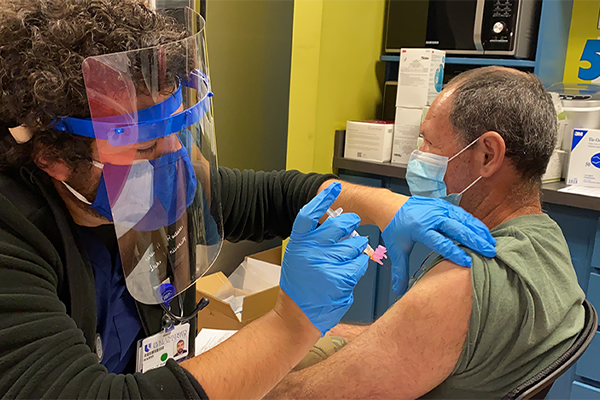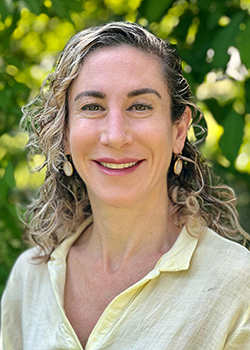
When it comes to COVID-19 testing and vaccination, not all Hispanic populations respond the same.
From Dominican and Puerto Rican to Mexican heritage, the choices made in confronting the virus are as diverse as the cultures represented in a new national study of COVID-19 patterns led by Duke University School of Medicine.
Take, for example, study participants with Dominican and Puerto Rican heritage. Compared to those of Mexican heritage, they were more likely to get tested for COVID-19. On the other hand, those of South American descent were more likely to have been both tested and vaccinated compared to those of Mexican descent.
“There is no single Hispanic population,” said lead study author and epidemiologist Emily M. D’Agostino, assistant professor in orthopedic surgery and population health sciences at Duke School of Medicine. “To be successful in COVID-19 mitigation we have to appreciate the diversity of the Hispanic community.”

Different COVID-19 strategies may be needed for various Hispanic communities.
The findings published in the October issue of Preventive Medicine Reports provide timely insight as the Centers for Disease Control recommends everyone over age 6 months get a COVID-19 booster shot before the fall and winter virus season.
More than 3,300 Hispanic, Latino and Spanish adults from 26 countries were included in the new study which is the first to harness data from Rapid Acceleration of Diagnostics-Underserved Populations (RADx-UP), a vast network of 137 community-driven research teams.
The National Institutes of Health invested in RADx-UP to understand why certain groups have been hit harder by COVID-19 and find ways to reduce the disparities.
The consortium is unique in its emphasis on community organizations and clinical researchers working side-by-side. The RADx-UP Coordination and Data Collection Center is a partnership between the Duke Clinical Research Institute, the University of North Carolina Center for Health Equity Research, and the Community-Campus Partnerships for Health.
Nuance in Numbers
From the onset of the COVID crisis, it was evident that the Hispanic community grappled with higher COVID-19 hospitalization and death rates.
But the influence of heritage and language is becoming clearer, underscoring the need to tailor health services for the unique needs and concerns of different Hispanic communities.
Researchers analyzed data collected from February 2021 through June 2022 from Hispanic people of different backgrounds to see if they had been tested for or vaccinated against COVID-19. They then associated the responses with participants’ heritage and language preference.
There was a striking mix of backgrounds: Close to half traced their roots to Mexico, accounting for 45% of the study group. Puerto Rico and Cuba represented 17% and 14%, respectively. The Dominican Republic made up 9% while the vast continent of South America contributed 6%. Smaller percentages hailed from various Central American countries.
About 4% preferred not to disclose their specific heritage.
Researchers found patterns in the data but could not determine the underlying factors that drove health decisions -- factors that may include cultural practices and beliefs, past experiences, and trust in health care.
Most studies have found that language barriers make it harder for people to get the health care they need.
But among the RADxUP participants, people who spoke Spanish or a language other than English at home were more likely to be vaccinated against COVID-19, especially among those with ties to Mexico, Cuba, or Central America.
While the new study used data from 18 of the 137 RADx-UP projects, the consortium includes about 400,000 study participants.
The vast network helped cultivate a nuanced look at Hispanic health which illustrates the value of community involvement in research initiatives, the Duke researcher said.
“By working with community partners, we were able to reach groups that are not typically represented well in research,” said D’Agostino who is a member of the Duke Clinical Research Institute. “The power of this data is its ability to unveil intricacies within communities that can help combat health disparities.”
Additional authors: Jorge Ramirez Garcia, Suzanne Bakken; Lisa Wruck and Ester Kim Nilles, Troy Stefano; Haley Martin; Annette Hungler Green; Rebecca Lee; Krista Perreira; Marianna Baum and David Brown.
Funding: Support provided by Azure sponsorship credits granted by Microsoft’s AI for Good Research Lab and the National Institutes of Health U24MD016258.